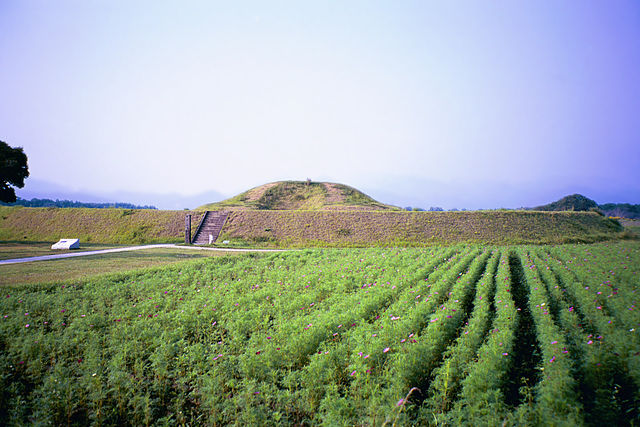
Saitobaru Tumuli
Miyazaki, Japan

|
Saitobaru TumuliMiyazaki, Japan |
This famous archaeological park contains over 300 kofun - mound tombs - dating from c. 350 AD to c. 650 AD. The tumuli all seem to belong to a high-ranking clan, although none of the burials is known scientifically to be of imperial origin. For historical reasons, however, some of the tombs are currently (2000) classified and managed as imperials by the Japanese Household Agency.
The park contains circular and rectangular shaped kofun, some with moats, in addition to the familiar keyhole type. Shown here is the approach to a tomb called Oni-no-Iwaya ("Cave of the Demon(s)," a popular but not historical name); it has two moats and a surrounding bank. Originally, the bank and top of the tomb would have supported numerous haniwa, terra-cotta statues which were introduced here a century after their first appearance in Honshu. Additionally, the earthen bank and mound would have been dressed with a fine covering of stones.

|

|